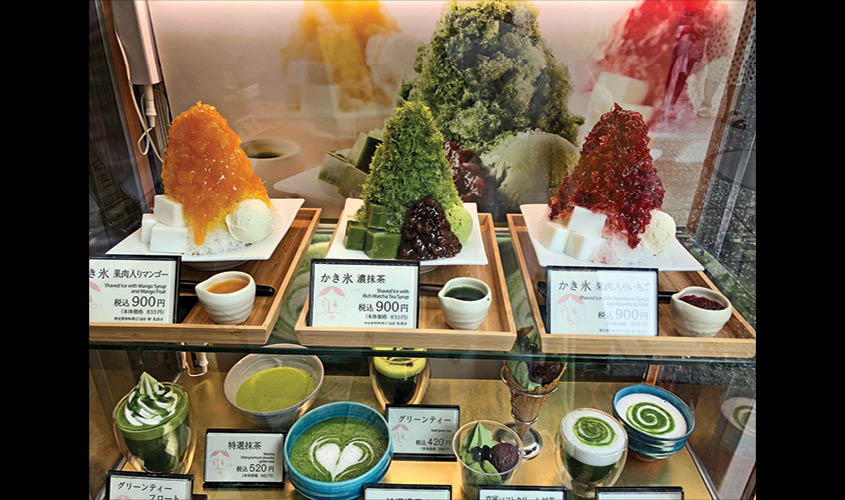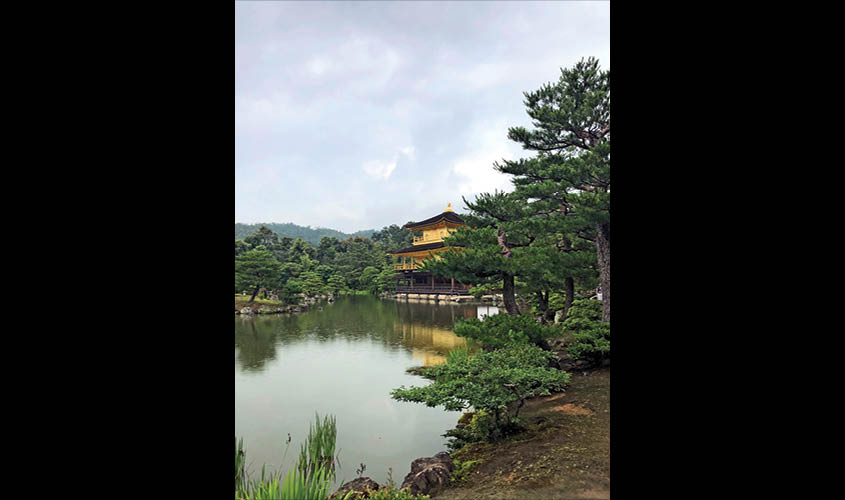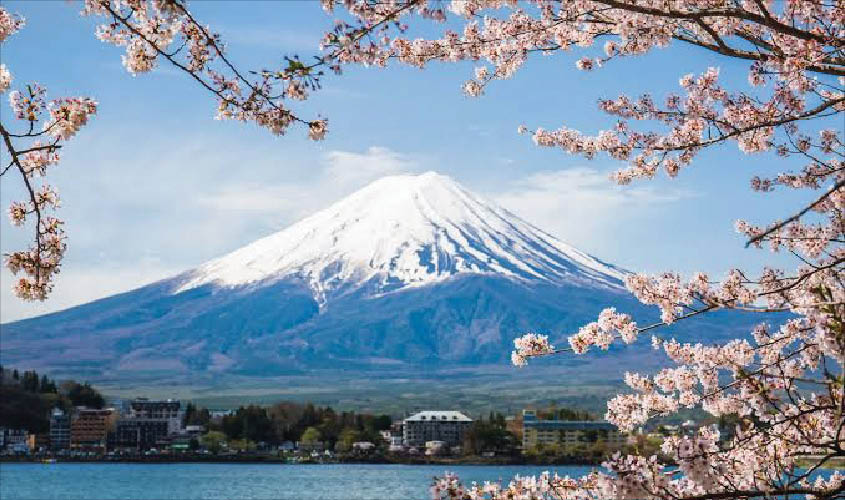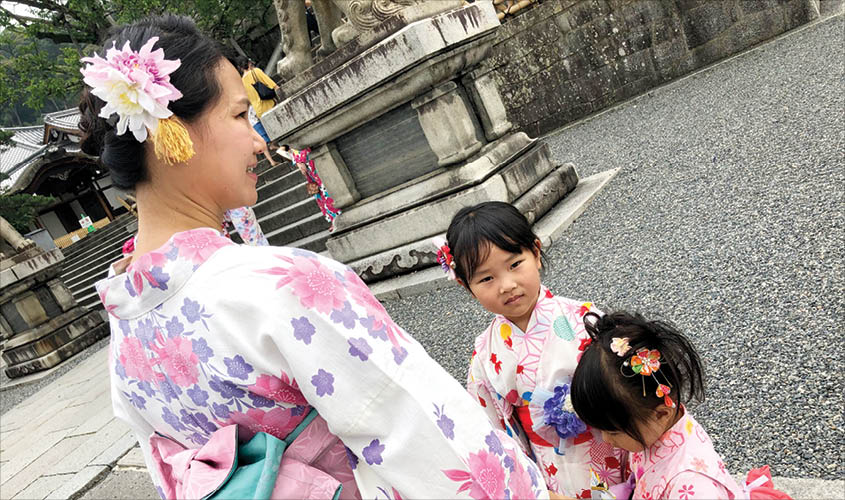Last year, nearly 1.2 lakh Indians went to Japan, and this number is expected to double every year.
Tokyo: The number of Indian tourists visiting Japan has seen a steady annual increase because of the burgeoning relations between India and Japan. Last year, nearly 1.2 lakh Indians went to Japan, and this number is expected to double every year. By this count, by 2020, about 40 million Indian tourists are expected to visit Japan, a country of around 126.8 million population of whom nearly 96% are followers of Buddhism.
This steady rise in the number of Indian visitors has been credited to Prime Minister Narendra Modi and the way he has contributed to the strengthening of India’s ties with Japan. Last week in Japan I interacted with a cross-section of people there. Jerry Nero, a Japanese businessman, said that ties between India and Japan had become better during Prime Minister Modi’s regime. Kyoto, the cultural capital of Japan, and Kashi (Varanasi) are now twin cities, and this has brought India and Japan even closer.
Among the various categories of Indian tourists visiting Japan, Gujaratis seem to be greater in number. There was a time when Indian food was not available in Japan, but today an Indian restaurant is found every 15 km. In these restaurants, not just butter chicken, but also pure vegetarian food and Jain cuisine are served. Even the Japanese have started tasting Indian cuisine, including gulab jamuns and butter paneer, naan and parathas. In fact many Japanese citizens have even opened Indian restaurants, where Indian, Nepalese, Bangladeshi, and Pakistani chefs prepare food. The craze for Indian food is increasing in Japan. Bharti Shah from Rajkot, who runs a restaurant called “Khazana” in Osaka, said that five years ago, very few Indians could be found there, but since Modi became Prime Minister, the number of Indians has doubled.

Japan is the third largest economy in the world. Japanese cities like Tokyo and Indian cities like Mumbai face some common problems, including crowded streets and traffic jams. Buying a house in Tokyo is very expensive.
Despite the lack of space, Japanese infrastructure is much better than India’s. Japan’s metro trains, underground traffic network, and public bus service infrastructure are among the best in the world.
The Japanese, whether the children or the elderly, widely use bicycles; also, people use more public transport than private vehicles—two-wheelers are not used much and people hardly use their cars. This, despite some of the world’s largest car manufacturing companies—Nissan, Suzuki, Toyota, and Yamaha—being from Japan. Car prices are cheap. While buying a car, one has to show that one has a place to park it. The certificate to this effect is issued by the local authority; the number of vehicles among which one’s car is to be parked is written in the certificate. While driving a car, no one uses the horn—honking is prohibited. So no matter how much traffic is there on the roads, there is no noise pollution. Not only are the Japanese extremely disciplined, they are workaholics, including the elderly.

The Japanese are among the longest living people in the world, mainly due to their food habits and the active lives they lead. The Japanese are a “happy” people, never seeming to get angry. They are always polite, do not raise their voices even in their homes. Another reason they live long is their pollution free environment. The Japanese eat more fish and prefer boiled vegetables with rice. Red meat and fried food are a big no. Though rice is a staple diet, yet obesity is not a problem for the Japanese; this is because they eat in small quantities. Several times a day, they drink green tea; use of milk is minimal. Even in every shopping mall and cafeteria, green tea machines can be seen.
Japan is one of the cleanest countries in the world—even the public toilets are neat and clean. Those with a cold and cough wear masks while leaving the house. It often rains in Japan, and umbrellas, arranged by the government, are within an easy reach. There is an umbrella stand outside every shop, office, station, government offices and banks, where the government provides free umbrellas. One can return the umbrella after using it.
The Japanese are big fans of cartoons, which explains why the animation industry there is booming with an annual turnover of $19 billion. There are numerous online gaming centres in Japan. Some of the world’s most popular cartoon series like Shinchan, Doraemon, Hello Kitty, Mario, Totoro and Pikachu are all Japanese.

Once Japan was the manufacturing hub of the world, but many industries have now shifted to China, which has affected Japan adversely. The Japanese economy is witnessing a slowdown; its GDP has gone down. Inflation is high: one litre of water in INR terms, costs Rs 60-70; a kg of apples Rs 400; tomatoes Rs 300 a kg; potatoes Rs 300 a kg; and oranges Rs 400 per kg. The average cost of living per person per month, in INR terms, is Rs 1.20 lakh. This is probably why though 62 years is the retirement age, people work even after retirement.
The Japanese are a resilient lot and have bounced back, time and again, from the worst of natural disasters including floods, volcanoes, tsunami and earthquakes. The Japanese art of disaster management is among the best in the world. There are earthquake-resistant buildings and even students in schools are taught how to survive during a tsunami.
Tokyo will host the Summer Olympics from 24 July 2020. Preparations for the Olympics are in the final stages. The Olympics are expected to boost Japanese economy. Already, new hotels are being opened and people are being taught English to communicate with the tourists.

